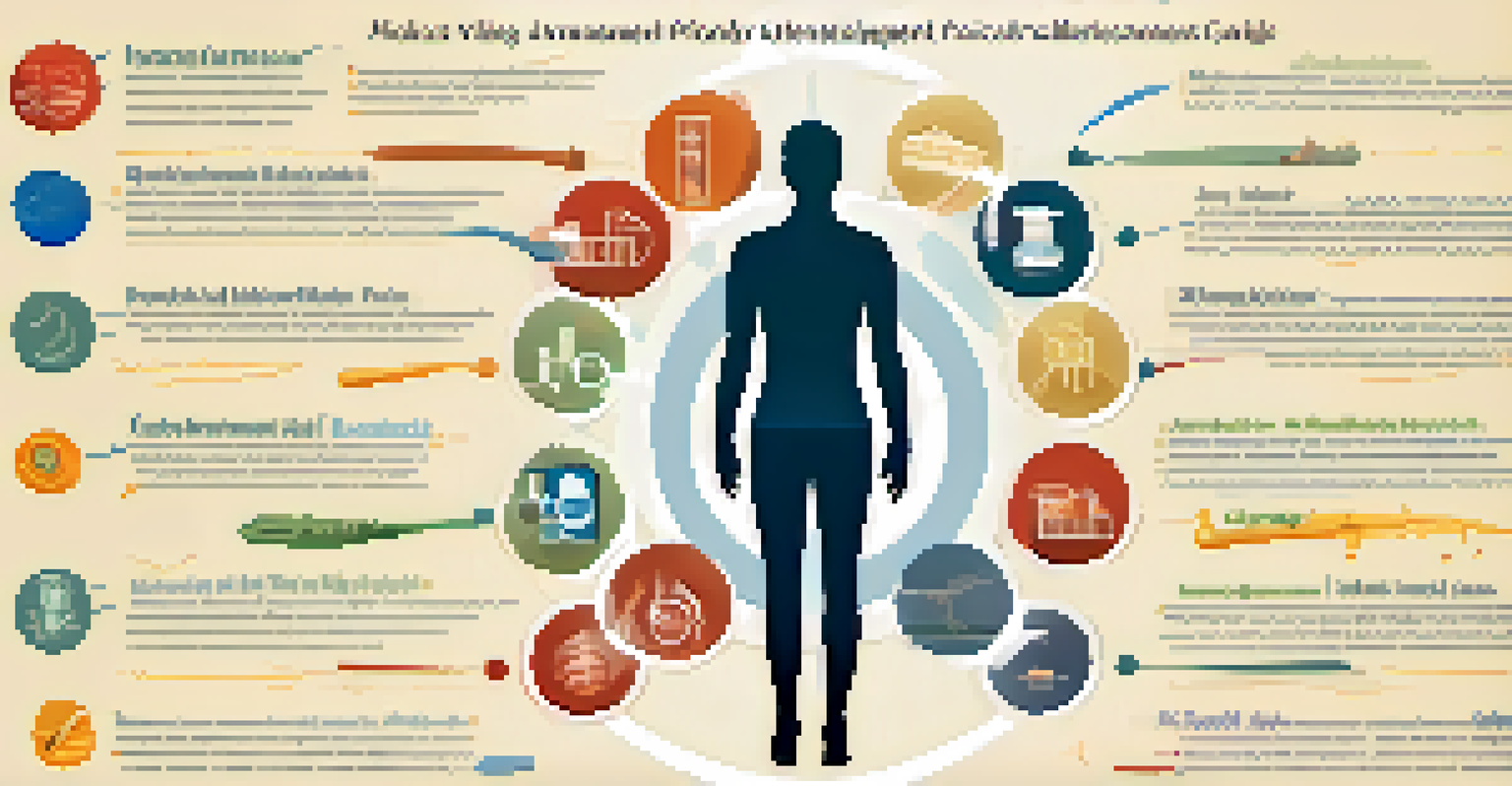The Importance of Patient Education in Pain Management

What is Patient Education in Pain Management?
Patient education in pain management refers to the process of informing patients about their pain conditions and the various treatment options available. It encompasses teaching them about medications, therapies, and self-care strategies that can help alleviate their discomfort. By empowering patients with knowledge, healthcare providers can foster a more collaborative approach to treatment.
Knowledge is power. Information is liberating. Education is the premise of progress, in every society, in every family.
This education can take many forms, including one-on-one consultations, educational materials like brochures, or even workshops. It's essential for patients to understand not just the 'what' of their treatment, but the 'why' behind it as well. When patients grasp the rationale behind their care, they are more likely to engage actively in their treatment plans.
Moreover, effective patient education often leads to better adherence to prescribed regimens. When individuals are informed and understand their pain management strategies, they are more likely to follow through with medications and lifestyle adjustments that can significantly alleviate their pain.
Why Is Patient Education Crucial for Pain Management?
Patient education plays a vital role in pain management because it helps demystify the treatment process. Many individuals experience anxiety and fear surrounding their pain, often stemming from a lack of understanding. By providing clear and concise information, healthcare providers can alleviate these fears, fostering a sense of control in patients.

Informed patients are better equipped to make decisions regarding their health. For instance, when they understand the potential benefits and side effects of a medication, they can have more meaningful conversations with their doctors about their preferences and concerns. This collaborative dialogue can lead to personalized treatment plans that resonate more with individual needs.
Empower Patients Through Education
Patient education equips individuals with the knowledge to understand their pain management options, fostering active participation in their treatment.
Additionally, well-informed patients tend to manage their pain more effectively. They are likely to recognize when to seek further help, understand the importance of follow-up appointments, and adhere to prescribed therapies, ultimately leading to better health outcomes.
The Role of Healthcare Providers in Patient Education
Healthcare providers are pivotal in delivering effective patient education. They must take the time to explain complex medical concepts in simple, relatable terms, ensuring patients grasp the information. This approach not only enhances understanding but also builds trust between the provider and the patient.
The greatest weapon against stress is our ability to choose one thought over another.
It's also important for providers to assess the unique needs of each patient. Some may prefer visual aids, while others might benefit from verbal explanations or written materials. Tailoring education to fit individual learning styles can make a significant difference in how well patients retain information.
Furthermore, providers should encourage questions and discussions. An open dialogue invites patients to express their concerns and clarifies any misconceptions, making them feel valued and heard in the pain management process.
Understanding Pain Management Options Through Education
Education helps patients understand the various pain management options available to them, which can range from medications to physical therapy. By learning about these options, patients can weigh the benefits and potential risks associated with each treatment. This understanding enables them to make informed choices that align with their personal health goals.
For example, a patient might learn about the differences between over-the-counter pain relievers and prescription medications. They can also explore non-pharmacological approaches, such as acupuncture or cognitive-behavioral therapy, which might resonate more with their beliefs and preferences.
Enhancing Treatment Adherence
Informed patients are more likely to adhere to their treatment regimens, leading to better health outcomes and improved quality of life.
By presenting a comprehensive overview of pain management strategies, healthcare providers can empower patients to take an active role in their treatment, fostering a sense of agency that is essential for successful pain relief.
The Impact of Patient Education on Treatment Adherence
One of the most significant benefits of patient education is its impact on treatment adherence. When patients understand the importance of their prescribed treatments, they are more likely to stick to their regimens. This adherence is crucial for achieving optimal pain management outcomes.
For instance, if a patient knows that a specific medication can help reduce their pain significantly over time, they are more likely to take it consistently. Education about potential side effects and the importance of regular follow-ups can also encourage patients to remain engaged in their care.
Ultimately, when patients feel informed and empowered, they become partners in their treatment journey, which leads to improved health outcomes and a better quality of life.
Overcoming Barriers to Effective Patient Education
Despite its importance, several barriers can hinder effective patient education. For example, time constraints during medical appointments may limit the amount of information healthcare providers can share. This can leave patients feeling confused or overwhelmed, which is counterproductive.
Additionally, varying levels of health literacy can impact how well patients understand the information provided. Some individuals may struggle with medical jargon, while others may not feel comfortable asking questions. It's essential for providers to recognize these barriers and adapt their communication styles accordingly.
Technology's Role in Education
Innovations like telehealth and digital resources are transforming patient education, making it more accessible and effective for better pain management.
By utilizing clear language, visual aids, and encouraging an open dialogue, healthcare providers can break down these barriers and ensure that all patients receive the vital education they need to manage their pain effectively.
The Future of Patient Education in Pain Management
The future of patient education in pain management looks promising, with technology playing a significant role in enhancing communication between healthcare providers and patients. Telehealth services, for instance, allow for more flexible education sessions, where patients can learn from the comfort of their homes.
Additionally, digital resources, such as apps and online platforms, can provide patients with interactive tools to better understand their conditions and treatment options. These innovations make it easier for patients to access information at their convenience, reinforcing what they've learned during appointments.

As the healthcare landscape evolves, prioritizing patient education will remain crucial. By integrating new technologies and methodologies, providers can ensure that patients are well-equipped to manage their pain effectively, leading to improved health outcomes and overall satisfaction.